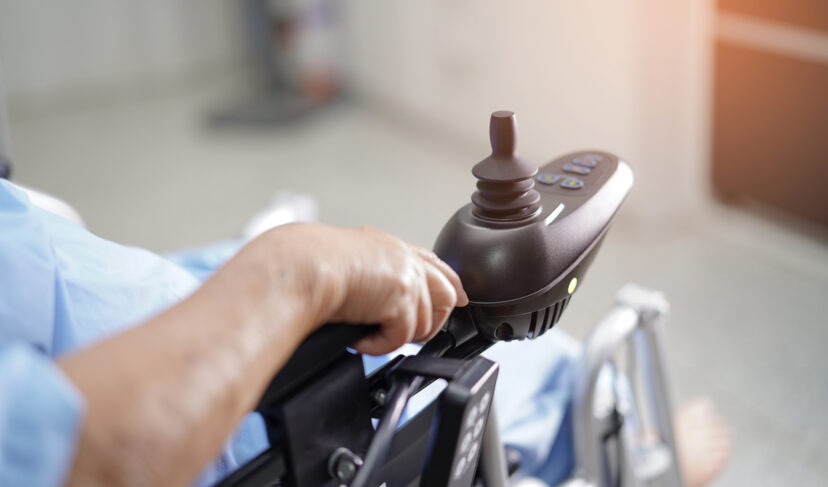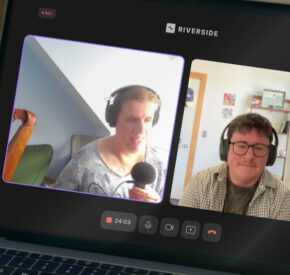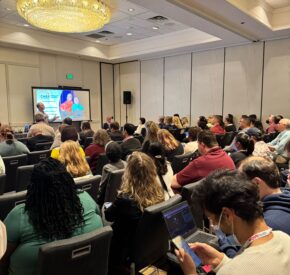Protect 504
Article 19 unpacks the lawsuit against Section 504 of the Rehabilitation Act
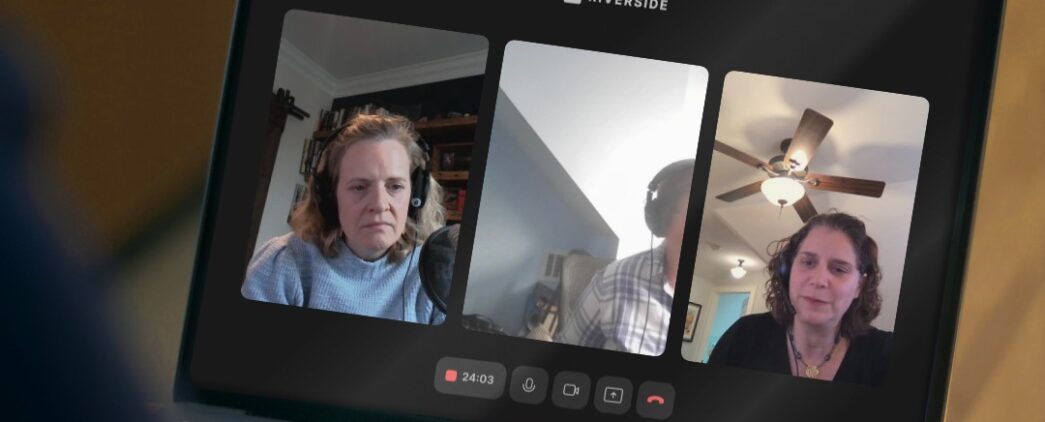
Section 504 of the Rehabilitation Act has been a cornerstone of disability rights for over 50 years—so why is it under attack now?
In this special episode, we are joined by Alison Barkoff, former head of HHS’ Administration for Community Living and a lifelong disability advocate, to unpack the legal battle, the misinformation fueling it, and the action we need to take right now. This isn’t a policy debate, it’s a fight for our rights, our healthcare, and our futures.
Listen to We Can’t Go Back on Section 504 and read more about Section 504 efforts to ensure that people with disabilities can access healthcare, education, jobs, and public services equally.
Meet our guest:
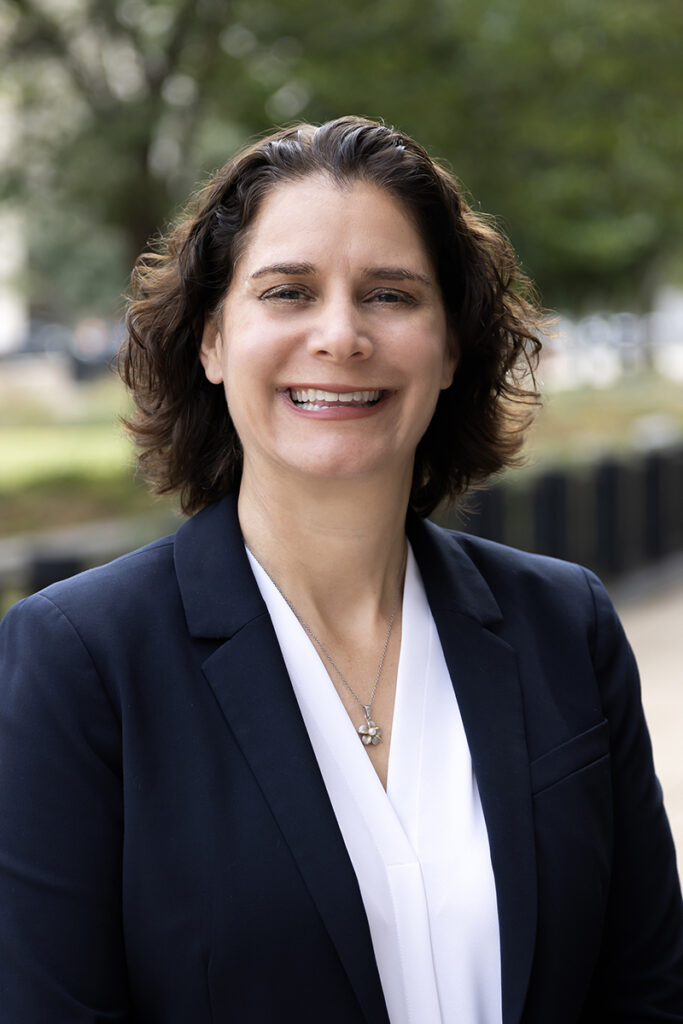
Alison Barkoff is a nationally recognized expert on health care, long-term services and supports, disability and aging policy, Medicaid, and civil rights. Prior to joining George Washington University in October 2024, she led the Administration for Community Living (ACL) in the U.S. Department of Health and Human Services from January 2021 to October 2024. In that role, she helped develop updated regulations implementing Section 504 of the Rehabilitation Act.
Listen to more Article 19 Podcast Episodes
Full Transcript
Access the PDF Transcript
Kristen Witucki:
Hey Katie, it’s been a minute.
Katie Samson:
Hey Kristen, it has.
Kristen Witucki:
It’s been really whirlwind, but like how are you as a PWD? How are you really doing right now?
Katie Samson:
I’m really struggling, honestly. It’s been a whirlwind. Lots of doom scrolling and then putting away the phone and no more doom scrolling. But obviously I think last week the big announcement about the attack of Section 504 woke me up and I know it woke you up.
Kristen Witucki:
Yeah, it did. Disability Rights Education Defense Fund had a really powerful testimony. I was shocked that I didn’t realize this had happened in September. I was like, wait, what? Now all of a sudden everyone’s talking about it. We should have been working on this for months.
Katie Samson:
Yeah, absolutely.
Kristen Witucki:
But it’s not too late. It’s not too late.
Katie Samson:
It’s definitely not too late and it certainly lit a fire under us knowing that we’ve got this platform with Article 19 and we’ve got people out there, both allies and people with disabilities that I think really want to take action. So we’ve got a special guest today that I’m really proud and honored to bring on. Her name is Alison Barkoff and she is the Harold and Jane Hirsch Associate Professor of Health Law and Policy at the Milken Institute School for Public Health at George Washington University. And she’ll come on and talk more about what we need to be doing and give us an update on the Texas versus Bacerra lawsuit and why we’re having this mini pod today. So let’s get into it. Alison Barkoff, welcome to Article 19. Thank you for being with us. I wondered if we could start out by having you just introduce yourself and your background and giving us a little bit of context of how you got involved with Section 504, got involved with law and disability rights in general?
Alison Barkoff:
Thanks, Katie, for having me today. Like you said, my name is Alison Barkoff, and I am currently a professor of health, law, and policy at George Washington University. And I just joined a few months ago after serving as a head of a federal agency in the U.S. Department of Health and Human Services called the Administration for Community Living, which is where many of the aging and disability programs are, and in that role, I served as an advisor to the Secretary of HHS on aging and disability policy and was involved in helping update these Section 504 regulations. I have been a disability advocate my entire professional life and actually my personal life too. Professionally, I’m both a lawyer and a policy person. I have been in and out of government, including the Department of Justice, Civil Rights Division, and had leadership roles in nonprofit advocacy. And personally, I am a sibling of an adult brother with intellectual disabilities and for more than 45 years, my family has worked together alongside my brother, and disabled people, and families across the country to fight for the rights of people with disabilities, to fight for services and supports. And so I bring real personal and professional experience to this issue.
Katie Samson:
So people who may not be familiar with this topic, and in particular with Section 504 and the update to the Rehabilitation Act, can you quickly summarize The Civil Rights importance of Section 504 from the Act of 1973. And then as a follow-up to that, can you summarize the updated rules that you so painstakingly worked on over the past number of years?
Alison Barkoff:
Sure. So most people, when they think about disability rights, probably first think of the Americans with Disabilities Act, which of course is incredibly important. But before the ADA and really what was a precursor to the ADA was a law and is a law called Section 504 of the Rehabilitation Act. And that prohibits disability discrimination in all recipients of federal funding. So think about all the things that the federal government funds from special education dollars going to states, Medicaid dollars going to states, and hospitals, federal housing dollars, federal transportation dollars. So this really important law says that if you get money from the federal government, you can’t discriminate in those programs. Every federal agency has their own set of regulations. And as I mentioned, I was at the U.S. Department of Health and Human Services, where we fund so much of health care and human services like child welfare. These rules had not been updated in 50 years. They hadn’t been updated since the ADA was passed. They hadn’t been updated since there were things like websites and apps and kiosks. And really it was COVID and the very insidious discrimination that people with disabilities face. People who would go to a hospital and have COVID and need a ventilator and been told we’re denying you access to a ventilator or other life-saving treatment because you are disabled. People who lost access to services and supports and ended up having to go into nursing homes or other institutions where the COVID rates were highest, highest rates of death and infection. So that really created this huge momentum for HHS to update those regulations. And this was really the first wholesale update to the regulations in 50 years. It really covered virtually every aspect. But a couple key things I’ll highlight is it prohibits discrimination in medical treatment based on stereotypes or bias, the idea that disabled people are a burden or that their lives are worth less than people without disabilities. For the first time, it sets standards in accessibility of medical equipment. Think about the number of people who may have mobility disabilities and literally cannot get on an exam table, cannot use a mammogram machine, and cannot get a pap. I mean, these are really, really critical healthcare issues. There are requirements around accessibility of websites and kiosks. Again, so much health care is provided in that space. Another really important place on the human services side is that parents with disabilities and children with disabilities have faced a lot of discrimination in the child welfare system, and there’s a whole set of provisions there. And then really importantly, I think, to some later parts of our conversation is in 1999, the Supreme Court issued a very important ruling called Olmsted Versus LC, which interpreted a part of Section 504 that’s also in Title II called the integration mandate, which requires states and other entities to provide services and supports to allow disabled people to live and participate in their communities instead of being forced into institutions. And the regulation for the first time takes that case law and codifies it into the regulation. That’s just some of it, but it really was a wholesale look at the ways that disabled people had faced discrimination over the last several decades and a really important endeavor that was driven by the community.
Kristen Witucki:
Wow, thank you so much for the thorough explanation of that update and everything that’s at stake. And as a blind person, I didn’t live without 504. It informed everything. So we know that in September 2024, 17 states signed on to some arguments against updated 504. Can you explain the main arguments these attorneys general are putting forth in their lawsuit against Section 504?
Alison Barkoff:
Sure. We weren’t surprised really to see this lawsuit. This same set of Republican states have sued on virtually all Civil Rights regulations that came out of the Biden administration. And what I would say about this lawsuit is there has been a little bit of what the states are saying the lawsuit is about compared with what the actual words are in the complaint. So, Not to get too detailed, but the regulations are actually the rules that courts give some level of deference to. And in making the rules, there’s a whole process. We got over 5,000 comments from people. You have to put out, here’s what we’re doing, here’s why we’re doing it. People give their comments, and then you explain, this is why we changed it in response to comments, this is why we didn’t. I all the time say this is the disability community’s rule. So in addition to the actual words of the regulation, there is a discussion. It’s called a preamble. It’s background language, and it answers questions. It doesn’t have the same force of law as the actual regulations, but it’s really, really important. So the two things that the states complained about is one thing we did was updated the definition of disability in Section 504 to align with the definition of disability in the Americans with Disabilities Act. And one question that has been litigated under the ADA is under what circumstances could gender dysphoria be a disability? There’s split in courts. The background talked about a decision in the Fourth Circuit Court of Appeals that found in some circumstances based on an individual analysis, gender dysphoria might be able to be a disability and said that the HHS agreed with that analysis. That wasn’t part of the regulations, that was background. No matter what’s in that background, the Fourth Circuit law is the Fourth Circuit law. That was a court that decided that, interpreting the statute. So the states came in and said, oh my goodness, this, and this is really part of a whole set of lawsuits that have been filed by these states that are very much anti-trans, anti-LGBTQ litigation. And really they tried to characterize the entire 504 regulation as being about gender dysphoria issues. Of course, as I just explained to you, this was about a huge, huge set of issues. And regardless of this lawsuit, the Fourth Circuit decision is the Fourth Circuit decision. Certainly, the Trump Department of Justice has already made clear through its executive order from the president that it has a different view. But the court case is the court case and really it is just the background. So one thing they said is, wow, this whole regulation, we need to strike it down because of this issue in the background around gender dysphoria. The second thing that they talked about was the Olmstead decision that I talked about. And saying that basically that was something that they thought was illegally telling states how they had to design their systems. So those were the two things they talked about. But what they actually asked the court to do was what was so breathtaking. They didn’t just come in and say, we don’t like these two pieces, change those pieces. What they came in and said is strike down the entire HHS regulation, strike down everything around medical treatment, strike down everything around accessible equipment and websites and child welfare, but they didn’t stop there. They then went on to say that Section 504, the statute that has been in place since 1973 for more than 50 years, they claimed that it was unconstitutional. that it went beyond Congress’s power to pass that statute and asked for the entire statute to be struck down. It’s breathtaking. That would mean not just the discrimination in health and human services, that would mean the discrimination in education, in transportation, in housing, and on and on and on. And that is what really caused the disability community to respond so strongly.
00:12:52
Kristen Witucki:
Yeah, I am blind and I haven’t lived without Section 504. It’s incredible in the worst way to even think about what that could mean. Under the previous administration, we know the DOJ would have vigorously defended Section 504. So what happens now?
Alison Barkoff:
So we’ve been closely watching this case and as we expected, and really is common when new administrations change. Very shortly after the Trump administration came in, they filed in this case, like many other cases, asking for a pause. So they could evaluate the position and the court granted that pause and said that the parties would have to come back by February 25 to update the court on the status. So we were watching to see what would happen. And probably in part because after we did a community briefing, letting people know about this lawsuit, a lot of people called their state attorney generals. Their state attorney generals really responded saying, wait, this lawsuit isn’t about striking down all of 504, even all of the HHS regs. They told stakeholders, no, this is really just about the gender dysphoria issue. And I think when people came back and actually showed them the words of the complaint, maybe they hadn’t seen it, maybe they were not being honest with stakeholders, but there was a lot of push on, hey, states wanted to get into court and maybe send some kind of message. So in advance of the 25th, a few days early, last night, there was a joint status report that was filed. The first thing they asked for is both, it was the Department of Justice and the states, and they all asked for continuation of the pause, citing President Trump’s executive orders on gender and saying they were going to go back and address the gender dysphoria issues and would report back to the court. But the thing that they did not do that they told stakeholders they would do, they said, we’ll be dismissing the entire lawsuit, we’ll be dismissing the constitutional claims. People were a little surprised to see they didn’t change one thing in the complaint. They didn’t make any changes. And in fact, they came in and said, nope, we are still challenging the entire regulation. And they said, we are still continuing the constitutional claim. Now they came in and said, what we are claiming, what stakeholders are saying this is about, is not what they intend. And they said, and again it’s just as breathtaking, they said, we think 504 should be limited to only apply to funding under the Rehabilitation Act. Now probably people are like, what is funding under the Rehabilitation Act? It’s not a lot of things. It’s basically a vocational rehabilitation and employment statute. So what would that mean? If a court found 504 only applies to actual funding under the Rehab Act, that would mean in the education world 504 would not apply in schools that get federal funding, education funding. 504 would not apply to fair housing issues in places that get federal housing funding. So what I would say from my perspective as a lawyer is this filing doesn’t address any concerns that I have. 504 as a statute and the HHS regulations are as much at risk today after this filing as they were yesterday before the filing.
Katie Samson:
Wow. Oh, thank you for that. How might the elimination of Section 504 impact a person like myself, who’s a wheelchair user and also hard of hearing, someone like Kristen who is blind. I mean, you talked about access to medical care, education, transportation, housing. But I also, you know, I think we at Tamman as well, we see this as a future for all Americans. We talk about you know, our aging populations and what could be potentially coming down the pike in the next 10 to 15 years with that demographic. And then also just the fact that, you know, we are all on our way to disability in one way, shape or form, whether it’s episodic, whether it’s situational. So I wondered if you could speak to that.
Alison Barkoff:
Sure. According to the CDC, one in four people in the United States have disabilities. And what’s really incredible about Section 504 and the Americans with Disabilities Act is really about ensuring people have access to and can benefit from all programs. It’s really simple. And as you probably know, you talked about different types of disabilities, what access looks like for someone with a physical disability is really different than the ways we might need to modify programs to make it accessible to someone who’s blind or has an intellectual disability. And honestly, probably every single thing we talk about in your daily life could be impacted if Section 504 were found to be unconstitutional and if it bled over to the ADA. So this really is about the huge progress that we have made in the last 50 years to make this world more accessible to disabled people with all types of disabilities, to be able to include people with disabilities in every aspect of life, And this really would mean taking away the biggest tool that we have had to make that happen.
Kristen Witucki:
So our audience is pretty eclectic and widespread, but we do have advocates, activists in our audience. What steps would you recommend that people take either now or maybe in the future? Do you recommend that we kind of hang tight for a few more days? What do you think?
Alison Barkoff:
So when we first did a briefing for the community, we were asking people to engage with their state attorney generals. You know, I think right now the most important thing is to make sure that leadership in states, and particularly in those 17 states, understand the importance of disability rights laws. So I think it’s really at this point, education, what I would say is there is a disability rights organization called DREDF, the Disability Rights Education and Defense Fund, and they have a website. dredf.org slash protect dash 504 that really has information. We’re trying to keep people updated on this lawsuit and I’d encourage people to keep checking back there. Right now, as I mentioned, the lawsuit is on pause, and it will be another month before there is a report back. It is possible the litigation could go forward? It is possible that HHS could say we are going to make changes to this rule and like when HHS created the rule, changing the rule would require notice and comment period where the public would be able to weigh in. So we would want to make sure your listeners knew how to engage there. Right now we are in a little bit of seeing how this all plays out.
00:20:22
Katie Samson:
Oh, thank you for being with us today, Alison, and sharing this information and really for the work that you’ve done to put this out there and to come on today and speak to us. We’re really crossing fingers and toes and, you know, everybody do whatever they can to stay educated in where we are at this moment. And we will continue to update folks on the podcast as well as in our various forums. So we really appreciate your time.
Alison Barkoff:
Thank you for having me and I’ll just say the disability community advocated really hard. They helped shape this rule. This is the disability community’s rule and I do feel strongly that it is worth fighting to keep the important rule and certainly to fight to ensure that Section 504 continues.
Kristen Witucki:
Thank you, Alison Barkoff, for your time. We know your schedule is packed and your dedication to the law, to accessibility, and humanity really shone through in this episode. And we can’t wait to have you back for another one. We thank Markus Goldman, our executive producer, Marty Malloy, president and in this episode timekeeper. And Steve Levine, our research analyst who really got us started on the journey with DREDF. We are your hosts, Katie Sampson and Kristen Witucki.
Article 19 is a call for others to join us in a bigger conversation around the ADA, digital accessibility, and access to information. At Tamman, we believe that access to information is a human right, and we are working to build the inclusive web every single day. If you like what you heard today and want to explore more about digital accessibility, technology, our company culture, or really anything else, just schedule a time to meet with us. You can find the whole Tamman team at www.tammanninc.com. That’s T-A-M-M-A-N-I-N-C dot com. Don’t forget to sign up for our newsletter so you never miss an event or an insight from us. Be sure to rate our podcast five stars on Spotify, Apple podcasts, or wherever you hear us. It really helps us grow and reach new audiences. Make sure to follow us, hit that bell icon. So you never miss an episode. If social media is more your style, you can also follow us at Tamman Inc. on LinkedIn, Twitter X, Instagram, or Facebook and share our podcast on your favorite platform. Until next time, thank you so much for listening and being a part of Article 19. Take care.
Show Notes
- DREDF Protect 504: An informative overview of the lawsuit which could result in Section 504 being overturned and clear direction on what you can do to protect it
- DREDF Protect 504 Plain Language: A plain language PDF version of the DREDF Protect 504 page
- HHS Section 504: The official rule for Section 504 including the 2024 update
- Texas v. Becerra: The official court document for the Texas v. Becerra case

